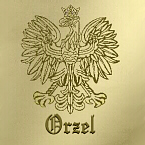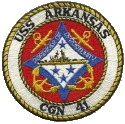mlees
Posts: 2263
Joined: 9/20/2003
From: San Diego
Status: offline

|
While mechanical reliability must be considered, it is a variable factor. I mean that, in time, the Tiger might have had the bugs wrinkled out.
I seem to recall reading ( I know, links or it didnt happen) that the roadside from Munich to Vienna was littered with Mk II and Mk III's during the Anchluss. And this was a relatively unopposed drive over hard roads.
Also, what were the breakdown rates for the panzers during the May-July 1940 time frame? I suspect that they were surprisingly high to arm-chair generals like me. 
According to Sirechaos in post #17, Tigers had a 5 (operational) to 40 (on paper) ratio...
Is that right? If so, then all I can say is Wow!
Introducing new weapon system in time of war is always a tricky thing.
If you wait too long, you might get outpaced by the enemy. Too fast, and you have a buggy system that gets the users killed (worst case).
The Japanese Zeke/Zero and the Me109 might be examples of this. They were 1st generation aircraft (for WW2) that outperformed what the enemy had at the beginning. Then they slowly became outclassed as the war dragged on longer than expected. (Arguably, the Germans were better able to squeeze more use out of their aircraft in the later years.) The Japanese late war designs were good, but poor quality control, poor pilot training programs, and a shattered economy kept them from being employed in effective numbers to turn the tide.
Another factor that occured to me, is Germany's manpower problem. Let's say you only have enough men to man 10,000 tanks. That's all, a hard limit. Any more and your starting to recruit old men (post 60) and others unsuited for combat. (Also you will be eating into your skilled factory labor force, reducing production in already high demand areas.) Let's say you believe that the combined enemies can throw 5 times that many at you. Now, if you have the ability to build 5,000 of any tank you have on the drawing boards, what kind do you get? The ones that make the most of your limited numbers. (The hardest to kill, right?)
Edit: After checking, I realised that there were probably no Mk III's around in March of 1938 operationally.
< Message edited by mlees -- 9/21/2006 12:25:24 AM >
|
 Printable Version
Printable Version

















 ) that the KING Tiger was pretty much a waste and even the Panther was a little too ambitious (see what 20/20 hindsight can do
) that the KING Tiger was pretty much a waste and even the Panther was a little too ambitious (see what 20/20 hindsight can do )
)
 )
)  New Messages
New Messages No New Messages
No New Messages Hot Topic w/ New Messages
Hot Topic w/ New Messages Hot Topic w/o New Messages
Hot Topic w/o New Messages Locked w/ New Messages
Locked w/ New Messages Locked w/o New Messages
Locked w/o New Messages Post New Thread
Post New Thread